If it shows strange behavior, find out why and not punish or cuddle it immensely.
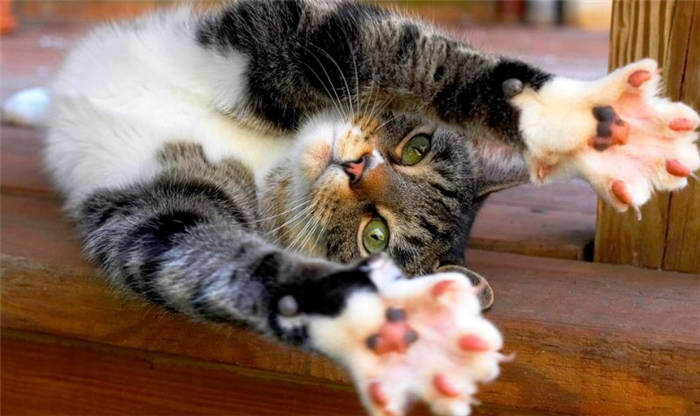
- Why a cat always bites
- What to do about biting cats?
- Why an adult cat bites for no apparent reason
- Fear or distress
- Demonstrate dominance.
- How to wean a cat from biting
- How to wean a kitten from biting and scratching
- Tip 1.
- Tip 2
- Tip 3
- Tip 4
- What to do if a kitten jumps from an ambush
- Rules of pet education
- A trusting relationship
- Proper play
- Forming the right reaction
- Additional measures
- Manicure
- Anti-scratch pads
- Important rules
- Can a cat bite for no reason
- Signals of attack
- Biting is fun!
- Early weaning of a kitten
- How to Teach a Kitten to Bite
- Dealing with misdirected play
- Responses to bites and scratches
- How to prevent biting and scratching
Why a cat always bites
Cats often bite and scratch. This does not always mean that they are angry and aggressive, in fact, there are many more reasons. Let's find out why domestic cats bite and how to wean them from it.
Lack of socialization at an early age. As early as 2-3 weeks old, kittens need to explore the world around them, in the case of pets – the apartment. They need to walk around the house, see guests and messengers coming in, the washing machine making noise, etc. If babies are locked in one room, they won't have that experience. As they grow up, such animals may bite strangers who look into the house, simply because they don't understand that they are not dangerous.
Teething. . Kittens, like human babies, love to pull things into their mouths and chew. This is how they try to scratch their itching gums when they are teething.
Pain and other unpleasant feelings. Cats hide ailments that may cause them discomfort in a certain area (such as the stomach or kidneys), and small skin injuries are invisible under their thick coats. If the owner accidentally touches the sore spot, the cat may bite. He says he feels uncomfortable and asks her to stop.
Too much petting. House cats usually like to be petted and scratched, but in moderation. If the cat has had enough and the owner continues, it can "hint" with its teeth for the person to stop.
An overabundance of affection. This cause is similar to the previous one: the cat bites when he is stroked and scratched, but it's not that he is uncomfortable. On the contrary, biting occurs precisely from an overabundance of feelings. A pet may purr or lick the owner before or after biting.
Overexcited by noisy play sometimes becomes the cause of attacks on their owners, too. Cats run around the room, meow loudly, bite and scratch.
Caring for their offspring . Mother cats often don't like it when their kittens are picked up. At such times, even the calmest kitty can pounce, bite and scratch, sometimes quite seriously. Sometimes even pregnant cats won't allow their belly to be touched.
What to do about biting cats?
If you have a kitten, don't play with it with your hands. When the baby chases his fingers, it looks fun, but he will grow up and continue to behave the same way. Buy lots of different toys: teasers, mice, balls, etc.
Teach from an early age that strangers in the house are not dangerous. Let the kitten see how the messenger comes, communicate with guests.
If your cat suddenly starts biting, the first thing to do is to take her to the vet. Have a specialist examine your pet and see if everything is okay. Is your pet healthy? Then you need to wean off the unwanted behavior.
Cats don't like loud harsh noises. When the cat bites you, slam your hand on the table or wall, stomp your foot. Repeat every time you are bitten or scratched. Sometimes several repetitions are enough.
A cat that bites when communicating and being affectionate with its owner is effectively punished by ignoring it. Move away from the pet or take it off your lap, don't pet it, don't talk to it, and generally don't react in any way for ten to fifteen minutes.
If the previous measures don't work, try a more serious method. Buy a few sprinklers (small ones are okay), fill them with water and place them around your house. As soon as the cat bites you, spray it with water. This is very unpleasant, but not dangerous.
When weaning your cat from biting, not only punish, but also try not to provoke the cat . Observe when your pet starts biting? Maybe he's reacting to too much petting. Then learn how to stop in time while the cat is still calm. Try to figure out how long your pet is ready to snuggle with you and stop petting while he is still calm. Sometimes you can see by the cat's appearance and behavior that it is about to bite: its ears are pulled back, its tail is twitching. Some cats meow before attacking.
Sometimes a cat doesn't like it when certain body parts are touched, most often the belly and tail, and sometimes the paws. Pet the fluffy where he likes it! Cats usually like to be stroked on the head and back, scratched behind the ears and chin.
Why an adult cat bites for no apparent reason
Small kittens may bite because they do not yet know the rules of behavior with humans, in the process of playing or during the teething period. Adults, who are already familiar with the etiquette, will not attack the owner for no reason: there is usually a good reason behind aggressive behavior – from fear or stress to the desire to protect the offspring.
Fear or distress
When stressed, cats rely on their main weapon – their teeth and claws – and this is dictated by their instinct for self-preservation. Many factors can cause stress in a cat: the arrival of a new pet, the presence of strangers, repairs and even rearranging furniture.
Cats are accustomed to a certain daily routine, they know which smells and sounds are safe, and they get used to the location of objects in the apartment and people with whom they share territory. Any change in their routine life and the arrival of strangers can alert the cat and become a real stress to them if the owner does not provide proper support.
Stress is closely linked to feelings of danger, so a frightened cat will not hesitate to bite a stranger, another pet or even its owner if it considers them a threat to life. To calm the cat, the owner should figure out the stressor and, if possible, shield the pet from it. You should also talk to your family and friends about rules of behavior with the cat: you should not take it out of its hiding place, pick it up against its will and pet it if it is not in a mood to socialize.
Demonstrate dominance.
Cats are territorial animals, and they are used to feeling in charge in their domains. In the wild, cats earn "authority" in a rather aggressive way, and at home, the pet may also try to subjugate you with quite inhumane methods. The thing is that cats do not perceive humans as their master: for their fluffy neighbors people are the same congeners, but bigger in size. Therefore, the behavior pattern of cats is the same: both with other cats and with people. More often this behavior is observed in cats, but cats can also dictate their own rules.
How to wean a cat from biting
To wean a cat from biting, you must first make sure that its life in the apartment is safe and comfortable. This requires that the cat has a quiet place where it can rest without being disturbed, that it is able to exercise its instinct to hunt and that it understands that nothing is threatening it.
Make sure that the cat has enough time to play, so that it can fulfill its hunting instinct and not waste its energy in an undesirable way, respect its privacy and don't make it sit in your arms if it is not in a social mood. Also, pay close attention to his health and see the vet if the cat's behavior alarms you. Don't forget scheduled vaccinations and scheduled visits to the vet once a year.
If your cat is stress-free, perfectly healthy and not in a state of sexual attraction, but still regularly "rewards" you with bites, follow the rules:
- Use stop words to curb unwanted behavior. You should say them loud and clear, looking the cat in the eyes;
- Don't play with the cat's hands and make sure others follow this rule as well;
- Limit communication with the cat if it bites and go to another room;
- Don't give the cat treats if it bites you, so as not to reinforce the unwanted behavior;
- Make loud noises every time the pet bites so that it will have unpleasant associations.
Education will only bear fruit if everyone in the apartment clearly adheres to the same rules. Over time, the cat will understand that such behavior in the house is not welcome and will stop showing its teeth at every opportunity.
How to wean a kitten from biting and scratching
Tip 1.
Don't create stressful situations to begin with. For example, a puppy in a new home eagerly gets to know the inhabitants, explores the room, doesn't mind playing right away.
A kitten cowering in a corner. You do not need to drag him, chase and try to catch him. It will come out when it wants to and feels it is safe. Let it sit and get used to it. This is normal behavior for a cat. In the case of violence you will certainly use your teeth and claws.
Tip 2
At least for the first time, do not invite guests into the house and do not arrange noisy children's activities. Loud music, shouting TV, arguments between family members in high tones, any noise or commotion will frighten the kitty for a long time. No confidence in people will arise, but aggression – easily.
And in the future it is better to tame emotions and muffle the sounds until the kitten gets used to it.
Tip 3
The small cat must have its own secluded corner. A special house, a shelf in the closet, a hiding place under the bed, chair or couch. Even a box that wasn't accidentally thrown away. The main thing is that he likes it.
Of course, the washing machine and the oven should be taken out, if it suddenly takes refuge there. In other places, if safe, leave it alone.
Animals also need privacy, personal space and a "nest" to rest.

Tip 4
Never yank the kitty while it's sleeping. A dog is happy for the owner's attention at all times, but a cat is not. Persistent petting will cause resentment and attacks of aggression. In this case, it will be very difficult to teach the kitten to bite and scratch.
Predators react much better than humans, and you won't be able to yank your hand off in time. And the teeth and claw marks are very painful and take a long time to heal.
What to do if a kitten jumps from an ambush
In no case do not throw away with a shriek the weakling body. Although this is exactly what you want to do. Act using the method described above – yell "no", clap your hands, splash water or throw a towel or a T-shirt over it. It is useful to gently pick up by the scruff and lift up, because the weight of the predator instantly loses its fighting qualities.
Cats also like to jump on top of people, sometimes just for the purpose of socializing. Also to bring them to their senses, before the habit takes hold. Causing negative emotions to accompany an unacceptable action, which animals remember perfectly well.
Rules of pet education
Cats are known to be resentful creatures and highly susceptible to stress. Therefore, when trying to wean the cat from scratching it is important to remember the golden rule – you should not yell at the cat, swear or physically punish it. The pet should be brought up in a friendly environment and establish a warm rapport – only this method will produce results.
A trusting relationship
Before taking any educational measures it is necessary to establish a trusting relationship with the cat. Here we should remember that a cat "assigns" itself a friend, considers the person to be like itself and builds appropriate relationships – it can share food, show friendly or even romantic sympathy, entrust its place or, in rare cases, its offspring.
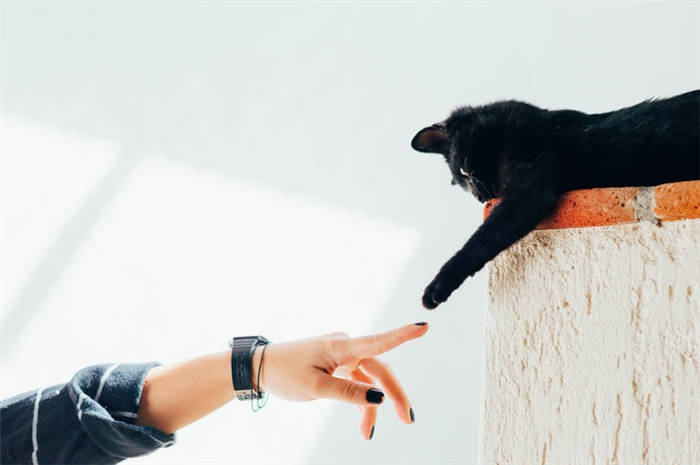
Relationships need to be built from a young age – that is, from the moment a kitten comes into the house. But there are cases when a person takes an already adult individual – then the friendship must be established gradually, gaining the trust of the animal.
Proper play
Play with the cat should be special toys and in no case hands. If the kitten is used to scratching and biting its hands, it will continue to do so at an advanced age.
If you have had to get an adult cat who has a habit of inappropriate play, you need to gradually wean her off biting and scratching by directing her hunting lunges at a ball, ball or toy mouse.
Forming the right reaction
Cats generally listen to their own instincts, habits and feelings, so the best way to wean them off clawing is to develop a subconscious response.
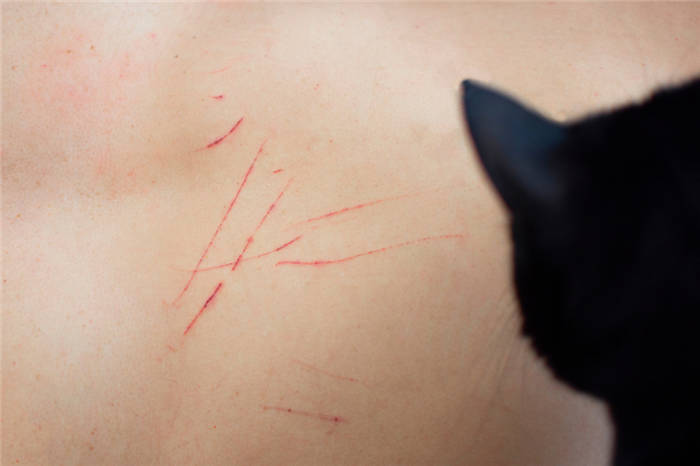
If you do not like the cat's scratches, it is necessary to resort to a reciprocal action, which will help the cat to understand that the person does not like claws. To which action the animal quickly develops a reflex:
Additional measures
Additional measures to deal with cat scratching should not be forgotten. These measures, combined with educational measures, will help the owner to go through the period of weaning the cat more comfortably.
Manicure
A cat manicure is a very important activity for all cats living at home. It is done with the help of a special tool, a claw cutter, which is selected individually according to the breed, the features of the claw, the nature and behavior of the animal itself.
This procedure is unpleasant and can be traumatic for the cat, so you should become thoroughly familiar with the subject before starting the procedure. If the breeder has difficulties and concerns, a groomer or veterinarian should be consulted.

Anti-scratch pads
Some breeders resort to the use of special pads that prevent the cat from scratching and damaging the furniture, even if the pet releases claws.
Anti-scratching pads are made of silicone or rubber, and less often plastic. They come in different colors and are attached by means of special glue.
The pluses of the pads – the cat will not be able to scratch anyone, damage furniture and flooring. It is especially convenient for families with small children, who can cause the pet stress or pain and get scratches in return.
Also, the pads are useful to owners of a characteristic, unpredictable cat with whom there is no way to build a trusting relationship. And the most important plus is that the cat won't be able to hurt itself with its claws. This happens with skin conditions that cause itching and burning. With anti-scratchers, the cat will not make additional scratches.
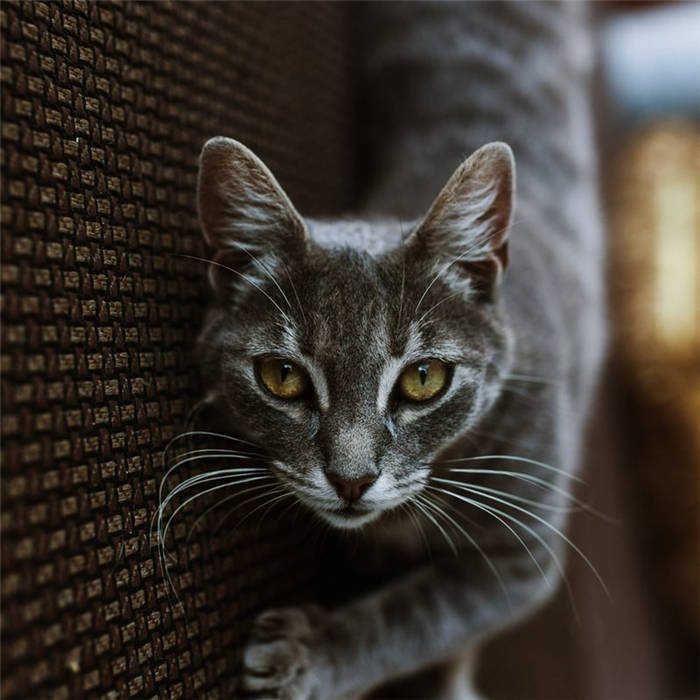
The tips also have disadvantages: if the cat visits the street, the pads are strictly contraindicated to him – in the street, the claws are a means of protection for the cat, and also without them it is impossible to climb, for example, on a tree.
Important rules
There are some important rules to follow when training a cat:
- Punishment must follow immediately after the misdemeanor, otherwise the cat will not form the necessary association. Even if it is only two minutes between the bite and the punishment, the animal will not understand the connection and will see your action as an insult.
- Punishment should follow the misbehavior every time, not on a case-by-case basis. This is the only way to develop a proper reflex.
- You should not humiliate the animal, for example lock him alone in a separate room or beat him. Beating a cat is not allowed under any circumstances! The only thing that can be allowed as physical force is a light smack with newspaper or a cloth. It will be perceived by the animal as noise.
- Raise your pet with love and affection, and be attentive to him. Always try to understand the reasons for its actions. Do not intrude when your pet is tired and wants to rest.
- Provide personal space for your pet so he can release his energy by playing with toys or practicing on a treadmill.
- Don't provoke or tease your pet. This will form a "sudden movement – teeth" bond.
- Be sure to accustom the kitten to the scratching post. It will give the opportunity to release the excess energy for the pet and keep the furniture and wallpaper intact.
It is necessary to educate your fluffy pet – you should not expect that everything will work out by itself. With respect for the animal you will grow a kind and sweet friend, with whom you will live in harmony, receiving only positive emotions from communication.
Can a cat bite for no reason
In most cases it is not possible. Most often people who do not want to understand their pets think so. In addition to the factors described above, cats have other reasons.
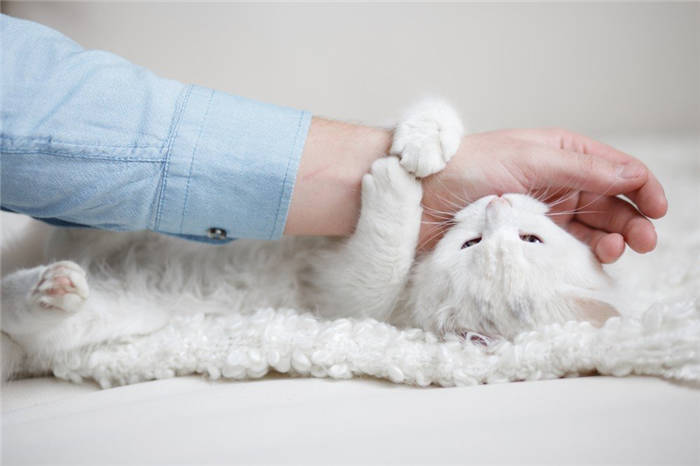
- Changing teeth. Just like in small children, the change of teeth does not go easily. Cats' baby teeth change at 3 to 4 months of age. During this period, they are also in pain and discomfort, so they try to "scratch" them on their human hands. The owner can go along with it, but this behavior should not be reinforced. In the future, the adult animal will try to bite your hand or finger.
- Puberty. During this period, cats and cats change their behavior and may be aggressive. Owners should be able to tell this by territory marking, screaming and trying to escape outside. This problem can be solved either by neutering or by finding a mate.
- Claw trimming. Non-domesticated pets or those who have had negative experiences will discourage it in every way possible. Therefore, an attempt to bite will only be an opportunity to defend themselves.
- It turns out that a simple lack of attention can also cause bites. In this case, it is better to give the whisker ten minutes of attention, and there will be no more problems.
- Cats are not only looking for companionship, but also simply require basic household things: cleaning the litter box, feeding or changing the drinking water.
Signals of attack
Is it possible to recognize a pet's readiness to attack? Yes, there are signs:
- the animal sharply changes its posture, its body tenses, its ears pressed against its head;
- the cat, a couple of minutes ago, carelessly purring, stops doing that;
- the cat's gaze changes greatly (dilated pupils, anger can be read);
- The sounds the cat is making become threatening;
- The tail twitches and the expression of the muzzle changes to angry.
All of these signals are better not to ignore and stop communicating. It is better to step back and let the animal calm down.
Biting is fun!
The behavior of a cat that we can define as unwanted always depends on the situation. Biting the owner's hands may not necessarily be a sign of aggression. Determining the cause of this behavior will help us solve the problem.
For example, a cat may treat biting its owner as good fun. It may have started back when our pet was still an adorable toddler, and while playing we let him scratch and bite, and the little teeth and claws could not do us much harm. When a cat continues this behavior as an adult, it is an example of improper socialization, and unfortunately, we caused it ourselves.
Early weaning of a kitten
One of the most common mistakes that lead to unpleasant consequences later on is early weaning of the kitten from her mother. Sometimes it's the cat that simply abandons her babies.But the best time when a kitten can be painlessly removed from her mother is around 3 months of age. By this time, kittens have mastered the basics of cat communication and can eat food other than milk. Remember that a kitten should not be weaned from its mother right away, it should be prepared for this change gradually. A kitten who is taken away too early is frightened, upset, and has not learned the rules of group life well. And this can also lead to attacks on the owners.
Sometimes a cat can bite us quite accidentally. It can happen, for example, when we step on it, and then there is a natural defensive reaction. A cat can also do this when it cannot discharge on someone else at the moment. This is called redirected aggression. A cat frightened by a harsh sound outside may attack the person next to it – a human or another cat. What about if we take our own anger out on the cat? If you are aggressive with a cat, it will begin to see you as the enemy and may well attack to defend itself.
How to Teach a Kitten to Bite
wikiHow operates on a wiki basis, which means that many of our articles are written by multiple authors. Volunteer authors worked on editing and improving this article while creating it.
To wean a kitten from biting, you must first understand why he does it. Different animals bite for different reasons, so to successfully re-educate a kitten, you need to understand what makes him/her bite. Kittens usually bite for three reasons: they are overexcited; you catch the kitten in the middle of active play; the kitten is frightened. Show a little patience and you can retrain your kitten. To learn more, skip to step 1.
Dealing with misdirected play
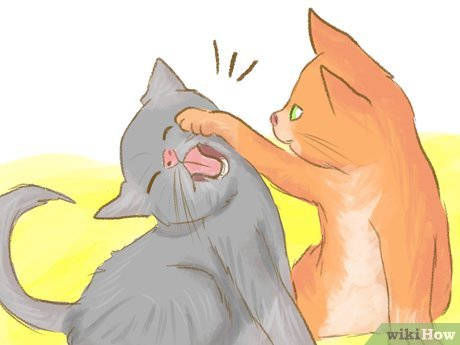
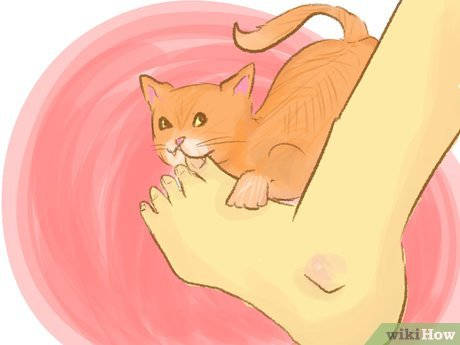
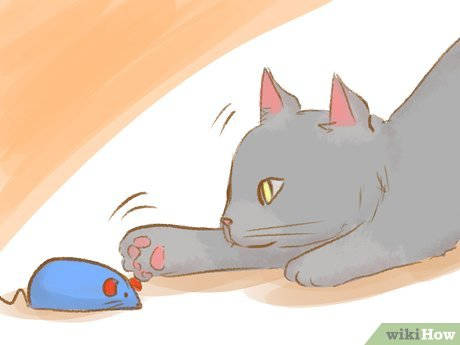
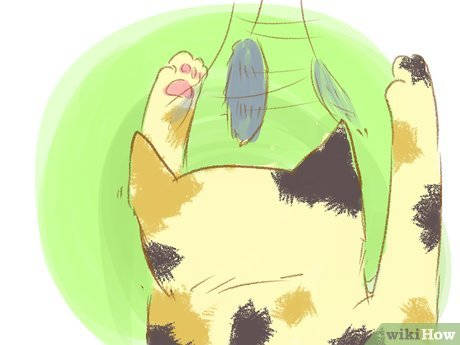
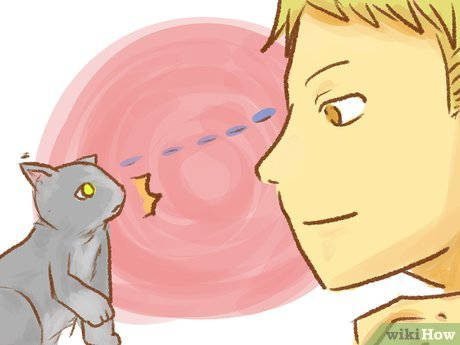
If you do get bitten, give your kitty "big eyes." If you are unlucky enough to get bitten, don't react with fear because it confirms that you are prey (this can be quite funny since the kitten is tiny, but it can lead to bite problems later). Instead, bend over to the kitten and look closely into his/her eyes with a hard stare. For cats, the long stare is a sign of dominance, and next time the kitten will think twice before lunging at you.
Responses to bites and scratches
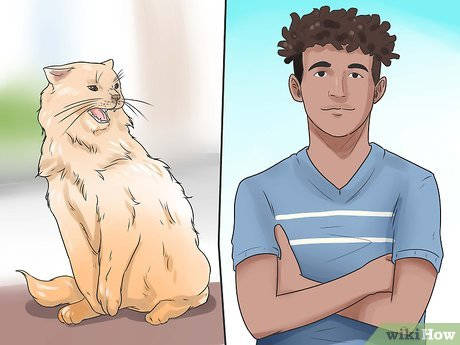
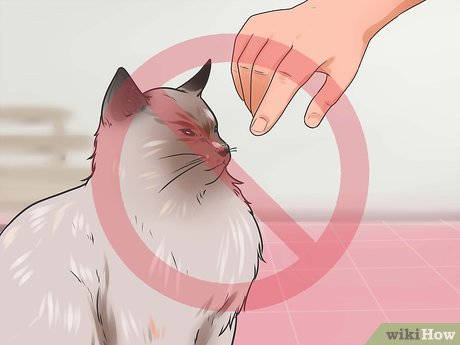
- Do not try to pet the cat after biting or scratching. Instead, show her your displeasure. After disciplining the cat. don't start petting her and cuddling her. This will confuse her, as it will provide her with mixed signals about your reaction to her behavior. She may even bite you again to get your hugs.
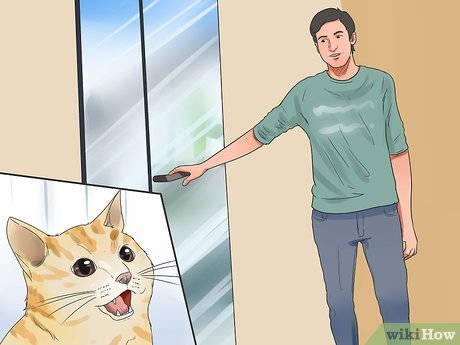
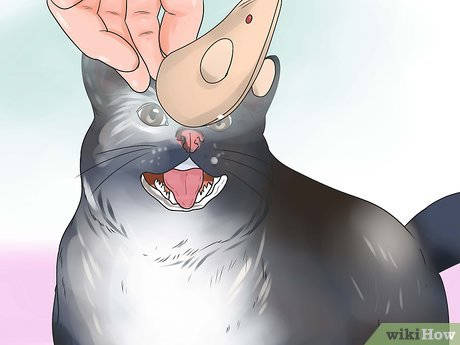
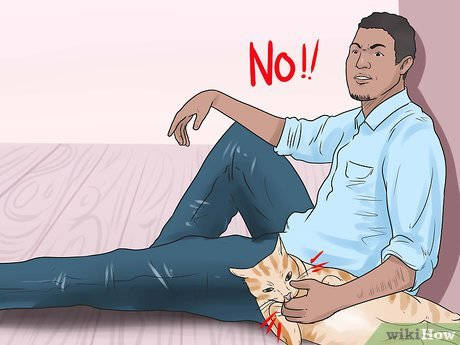
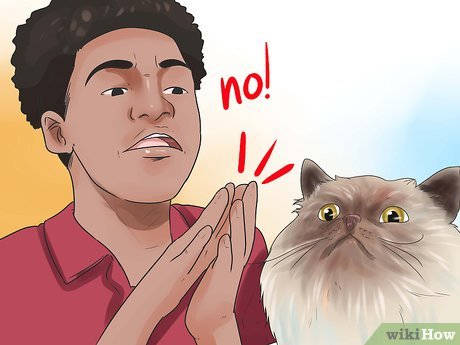
How to prevent biting and scratching
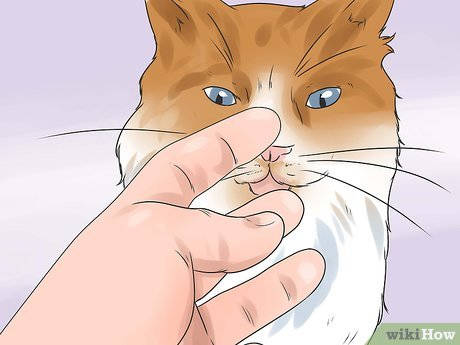
- If your cat is trying to bite you affectionately and you want to wean her off it, gently push her mouth away. The cat is uncomfortable with trying to spread her jaws, so she will stop continuing to bite you. In general, however, try to remove your hands in a timely manner during playtime, when the possibility of the cat biting you or scratching you with its clawed paw becomes most likely.
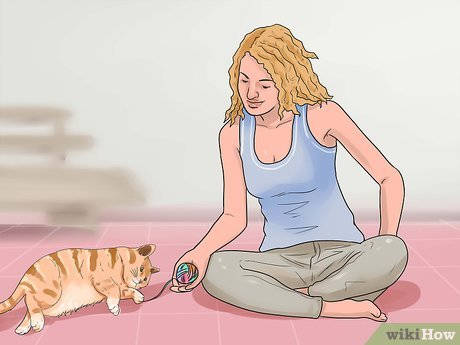
- For fun and practice, cats just need to be able to bite, scratch and chew something, only they shouldn't use you or other people for that. Try playing with the cat with a fishing rod toy, so your hands are protected from biting.
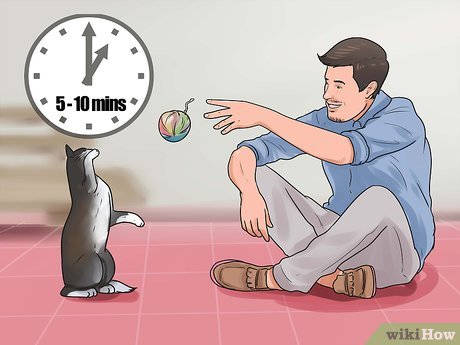
- The idea is to provide the cat with mental stimulation to chase prey and give it physical exercise. A tired cat will be less likely to attack its owner than one that is bored and has excess energy. [5] X Source of information The Cat's Mind. Bruce Fogle. Publisher: Pelham Books.







